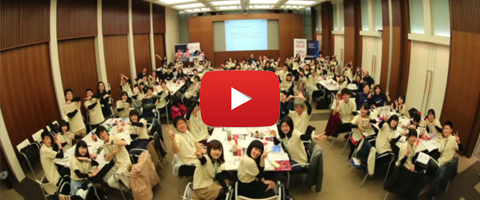TOMODACHI BEYOND Tomorrow Global Leadership Academy 2014

Overview
In March 2014, Global Fund for Education Assistance implemented the TOMODACHI BEYOND Tomorrow Global Leadership Academy 2014 as part of the “TOMODACHI Initiative”, a public-private partnership including the U.S.-Japan Council and U.S. Embassy. Out of the high school and college students who had travelled to America through “TOMODACHI Initiative” programs, 72 students were chosen to gather in Tokyo through a selective screening process. Over a period of three days participants used a discussion format to gather proposals to address global natural disasters (the Typhoon Haiyan in the Philippines, the Haiti earthquake, The Sumatra Earthquake and Tsunami), incorporating their own personal experiences as well as input from natural disaster experts. In light of the United Nations World Conference on Disaster Risk Reduction which will be held in Sendai in March 2015, the participants, having themselves experienced the Great East Japan Earthquake debated the message they wished to send to the world. At the closing ceremony attended by leaders from all fields, participating students presented their proposals, and delivered them as proposals to the Director-General for Global Issues, Ministry of Foreign Affairs.Objectives
- To provide participants with an opportunity to deepen their understanding of global agendas, discuss and think about what actions are necessary to address those issues.
- To have the participants contemplate what future role they would like to fill in society and come up with a concrete vision for themselves.
- To provide participants who travelled to the U.S. on different programs with an opportunity to share their experiences to create a sense of community as the “TOMODACHI Generation” that will help them all move forward toward a common future.
Dates and Locations
March 7 – 9, 2014 National Olympics Memorial Youth Center (Shibuya-ku, Tokyo) Merrill Lynch Japan Securities, Tokyo Office (Chuo-ku, Tokyo) Tokyo American Club (Minato-ku, Tokyo)Participants
Participating Students: 72
Sixty-three high school students and nine university students have traveled to America through TOMODACHI Initiative programs. University students participated as team leaders to guide the high school students. Students who hope to become global leaders in the future were chosen through a selective screening process.
Mentors
Volunteers from Bank of America Merrill Lynch, the academy’s supporting organization served as mentors for each team. They gave advice to students on a range of topics, including presentation preparation, and career advice among other topics.
Speakers, Experts
After the students put together proposals for addressing global natural disasters, they conducted interviews with leaders in various fields to obtain their input. Experts involved with helping disaster victims of the Haiti Earthquake, Sumatra Earthquake and Tsunami, and Typhoon Haiyan came to share their knowledge.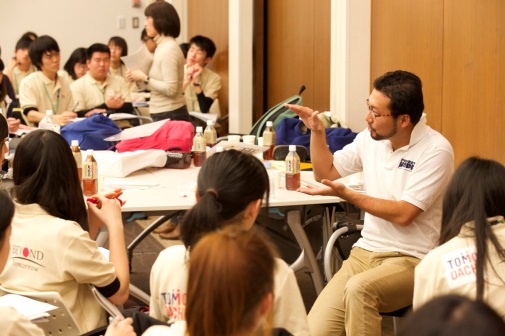
Participant Voices
It’s this lingering, indescribable atmosphere. Even now it is difficult to put into words. As a result, I received the first place prize at the proposal presentation. I couldn’t believe it. I was crying and screaming. It was only possible because of the unity among the team members. The first place award has given me confidence. I cannot help anyone if I don’t believe in myself. I feel like I’ve rediscovered myself thanks to BEYOND Tomorrow. Koto Ota (2nd Year Student at Kozukata Prefectural High School, Iwate Prefecture)
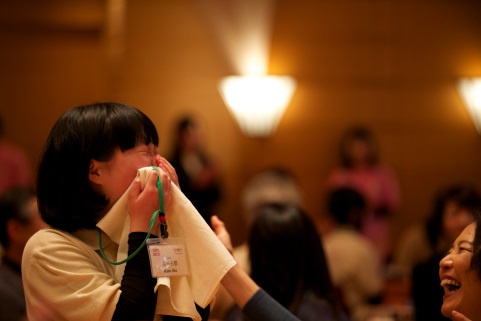
BEYOND Tomorrow and TOMODACHI are supporting us in pursing our future dreams and the things we want to do. With this in mind, I realized that the people who have gathered for the Academy are those who really want to keep moving forward. And so, I thought I should follow their example. Makoto Sasaki (2nd Year Student at Miyaoka Prefectural High School, Iwate Prefecture)
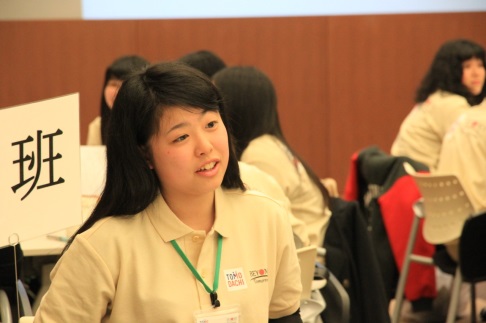
Program Overview
Setting the Agenda
“Creating plans of action for disaster risk management with lessons learned from the Great East Japan Earthquake and Tsunami”
The United Nations World Conference on Disaster Risk Reduction will be held in Sendai in March 2015. A plan of action will be put forth based on the ideas of this conference, including reducing the worldwide risk of natural disasters, and reducing the tragedy through global strategy. Each team’s plan of action was presented at the Closing Plenary, and were voted on by those present. The plan that received the most votes was presented to the Director-General of Global Issues for the Ministry of Foreign Affairs.Themes
1. Typhoon Haiyan 2. The Haiti Earthquake 3. The Sumatra Earthquake and TsunamiLecture: “About the Global Agenda”
On the first day of the three day program, World Economic Forum Global Agenda Council Education & Skill member Yoko Ishikura came to give a lecture. She spoke the students about why it is important for them to think globally, and how they can contribute to the efforts to address natural disasters worldwide.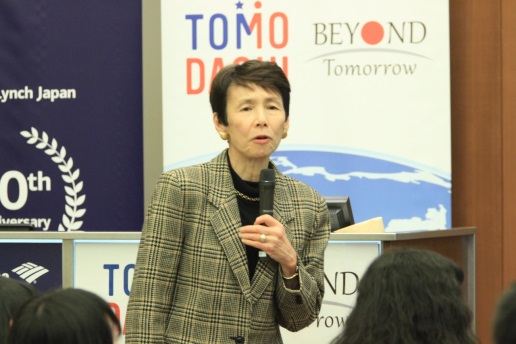
“Natural disasters can occur anywhere in the world at any time, causing both human injury and economic damage. These problems frequently cross national borders. When an entire region is affected by natural disaster, reconstruction is not a simple process. You all experienced the Great East Japan Earthquake and Tsunami, a terrible disaster even by global standards, and so many of you have something to say with regard to the global agenda. Many of these proposals for solutions, as well improvements are ideas that could only come from those who experienced the disaster firsthand. You may have had to deal with tragedy because of the earthquake and tsunami, but that is exactly why you can do something about it.”
Understanding Needs
The students started by trying to understand the needs that arise when a natural disaster occurs. They thought of similarities between the disasters, based on their personal experiences from three years ago, discussed what will be necessary to address natural disaster as part of a global agenda.Shared Voices
If you compare Tohoku and the Philippines, I felt that one important similarity is the need to restore the fishing industry. With the loss of fishing vessels, jobs disappear, meaning that people lose their source of income. I think this is something true of both Japan and the Philippines. However, Japan was able to acquire replacement boats from other regions relatively quickly, something that doesn’t seem to have been the case for the Philippines. Also, since the earthquake Japan has kept up its refuge shelter maintenance and medical assistance, again something that seems to have caused a great deal of trouble for the Philippines.
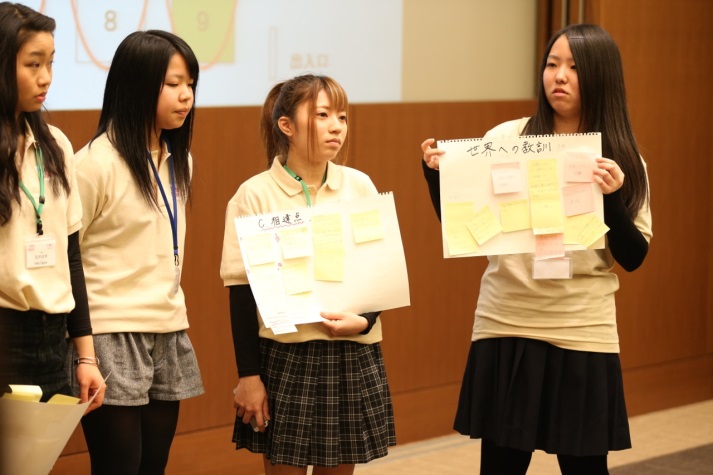

If you compare the Sumatra Earthquake and Tsunami to Tohoku, in either case immediately after the disaster countries around the world began sending aid, but for various reasons it was difficult to get aid all the way to victims. However, in Sumatra’s case, people lacked knowledge about tsunamis and earthquakes, and in addition there was in some ways an entire second disaster that occurred with the spread of infectious and contagious diseases, which is why the damage was so much worse than in Japan’s case.
Interviews with Experts
Typhoon Haiyan
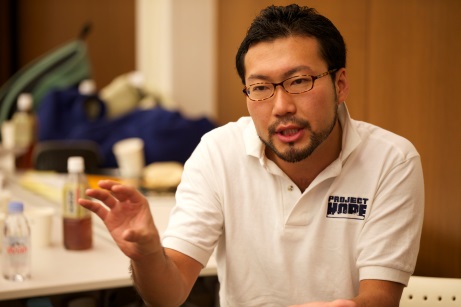
Somewhere between four and six thousand people died during Typhoon Haiyan. This is lower than the prediction of 20 to 30 thousand deaths, but deciding whether to see this as a high or low number is exceedingly difficult. According to our calm, but somewhat unfeeling judgment it is relatively small, and we think the Philippines did well. However if you really take a moment to think about it, six thousand is still a huge number. As a natural disaster aide worker, I feel we will undoubtedly have to deal with people who think like this.
The Haiti Earthquake

In Haiti, disaster prevention is not considered customary. There are many children not attending school, and the literacy rate is below 50%. Children belonging to families of means quickly escape to America. Naturally, this means that the remaining people are mostly those without access to education. There was a sense of helplessness among the young people I interacted with in Haiti. They have been poor since birth, and feel that they are separated from a vastly different outside world. With proper economy policy in place, there may be jobs for them, which could change their situation dramatically.
The Sumatra Earthquake and Tsunami

There are a lot of people involved in the fishing industry in the area where the tsunami hit. While physical objects were washed away, the tsunami did not wash away their skill or experience in the fishing industry. No matter the trouble, the fishermen’s skill and experience are things that no one could ever take away. Through material support we can use our own experience and skill to provide assistance, and help replace what was lost. The question that we think of most in the field is, how can we encourage self-reliance? We realize this is emergency aide, but we are most concerned over the issue of providing aide in a way that moves survivors towards restored self-reliance.
Dialogue with Leaders
Throughout the three-day program, the participating students engaged in dialogue with leaders from various fields. Experts gave advice to the students on what they should try to accomplish during high school and middle school, and also how they can find ways to contribute to society in the future. Daiju Takahashi Chief Administrator, Eat and Energize the East Ryoji Noritake Project HOPE Consultant Seigo Hara McKinsey & Company Hanako Fujita School of Medicine, Gunma University Rie Nagano NPO, Victims of Human Trafficking Support Center, Lighthouse Matsuda Yusuke CEO, NPO Teach For Japan Noyuri Mitsuhashi Youth Outreach Specialist, U.S. Embassy Hiroaki Yabe Youth Venture Program Leader, Ashoka Institute of Japan Riyo Yoshioka Senior Associate, Human Rights WatchClosing Plenary
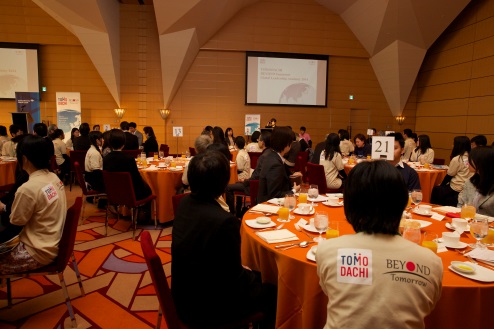
Special Message
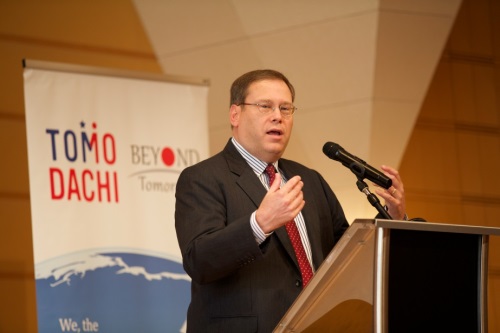
I believe there are three things every leader must have. The first is courage. I believe that all the participating students who have gathered here have shown that they possess this courage through their efforts to deal with Japan’s recovery after the Great East Japan Earthquake and other difficult societal issues. The second is confidence. I’m sure that everyone has gained a great deal of confidence as a result of this Academy. The third is curiosity. When you look at the great leaders of the world, you will notice that they all have curiosity. I believe all of you present today possess courage, confidence, and curiosity. I hope you will all become great global leaders in the future.
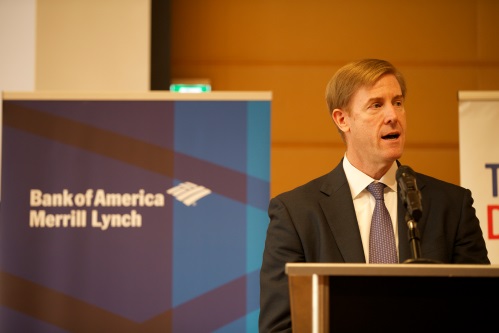
At Bank of America Merrill Lynch, we understand the importance of providing ongoing support for the recovery of the Tohoku region. We feel passionately about staying involved in this process, and working with students and others from the region to try to help make a difference. We have all been humbled by the Academy participants’ tremendous capacity for resilience, and their hunger to learn English, travel the world and take on new challenges. Based on our interactions with these remarkable young people, I have no doubt that they will continue to grow and have the potential to become leaders on the global stage. We at Bank of America Merrill Lynch remain dedicated to supporting their journey and that of the Tohoku region. And we hope to see all of the students we work with become “legends” in the future.
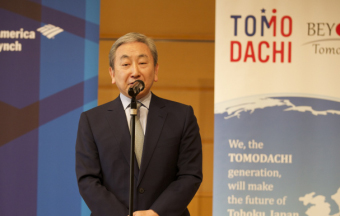
Three years have passed since the earthquake, and over time the disaster inevitably fades from people’s memories. If we merely try to provide relief for the children who suffered as result of the disaster, we may run out of energy. However, we can bring together colleagues from around the world, support our hometowns, and nurture leaders to take the initiative. If there is a program that can demonstrate this ability to develop human resources, it can surely last for decades to come. I hope all the high school and college students here continue to possess that energy. Also, I hope that BEYOND Tomorrow can continue to help these kinds of students.
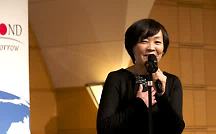
Soon, three years will have passed since the Great East Japan Earthquake. Many people lost their lives. It is with the heaviest of hearts that I speak. However, I believe that as a result of this tragic event, we have seen the establishment of many wonderful relationships, development of friendships, and a change in the Japanese way of thinking. I think that the spirits of those who died in the disaster are telling us something important. We must be sure to listen to their message and not waste the opportunity we have been given. Each individual has his or her mission in life, and every experience has meaning to each individual. I think that here is some sort of meaning in attempting to fulfill this mission. Those who were affected by the disaster have no doubt undergone great hardship, but because of that I believe they have an even greater mission to fulfill. I hope that in the future you will do your best not only for disaster recovery, but for the sake of Japan, and the sake of the world.

The most powerful tool all of you have is your youth. Although it all started from the Great East Japan Earthquake three years ago, now the disaster area, your culture, and the places where you grew up are all now at the center of a global issue. Please see this as an opportunity. Please use this opportunity not only for yourself, but also the people who lost their lives, and your hometown regions.
Student Presentations

Review
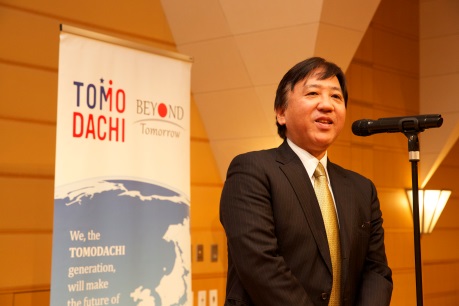
I think it is wonderful that because you all are students from the affected area, you capture the commonness between the disasters affecting Japan and Haiti, Sumatra, and the Philippines. Several teams raised the idea of not forgetting the disaster. I think that the efforts of young people to “not forget” and to influence others will become the center of the disaster prevention efforts. It is of utmost importance that we encourage global cooperation as we move forward to address global natural disasters.
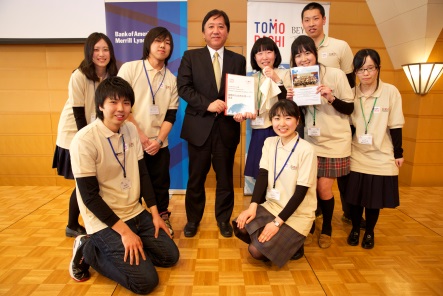
The U.N. World Conference on Disaster Risk Reduction will be held in Sendai from March 14 to 18 of 2015. One of the themes of the conference will be to “build back better.” We will try to find what is necessary to build an even stronger community after disaster strikes, a sentiment also reflected in the phrase, “bounce forward.” In other words, we are not simply restoring an area to its pre-disaster state, but instead striving to foster global cooperation to create an even better world. I would be honored to lead the conference with the strength and cooperation of all those here.
Speech by Student Representatives
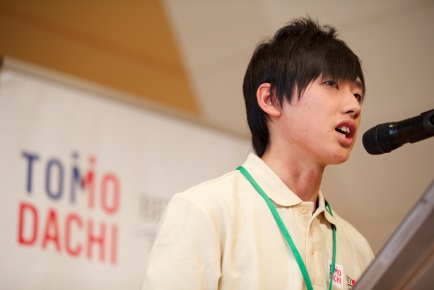
“These listeners, who I expected to feel so distant, opened up their hearts and shed tears for me. I started to see why sharing my experience was meaningful.”Shun Sato 3rd Year Student at Miyagi Prefecture Agricultural High School
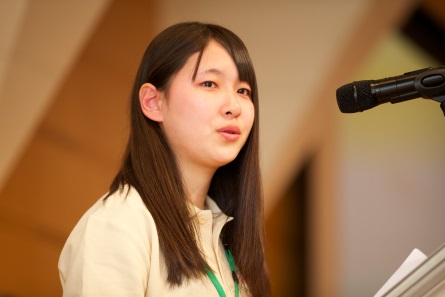
“From experiencing the disaster, I feel I have been reborn after seeing people’s kindness, and learning to appreciate things I used to take for granted in my daily existence. Although the earthquake and tsunami was a terribly painful experience for me, I know that it has undoubtedly made me a stronger person.” Miu Hamato 1st year Student at Kamaishi Prefectural High School, Iwate Prefecture
Reflection

Media Appearances
Supporters
 Bank of America, Merrill Lynch
Bank of America, Merrill Lynch

